| Listing 1 - 10 of 53 | << page >> |
Sort by
|

ISBN: 0080231918 Year: 1978 Publisher: Oxford Pergamon
Abstract | Keywords | Export | Availability | Bookmark
 Loading...
Loading...Choose an application
- Reference Manager
- EndNote
- RefWorks (Direct export to RefWorks)
Book
ISBN: 0674608151 Year: 1972 Publisher: Cambridge (Mass.) : Harvard university press,
Abstract | Keywords | Export | Availability | Bookmark
 Loading...
Loading...Choose an application
- Reference Manager
- EndNote
- RefWorks (Direct export to RefWorks)
Brain. --- Neural analyzers. --- Neural receptors.
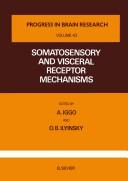
ISBN: 0444413421 9786611715786 1281715786 0080861687 Year: 1976 Volume: v. 43 Publisher: Amsterdam Elsevier
Abstract | Keywords | Export | Availability | Bookmark
 Loading...
Loading...Choose an application
- Reference Manager
- EndNote
- RefWorks (Direct export to RefWorks)
Neural receptors --- Receptors, Neural --- Congresses. --- Physiology --- Congresses
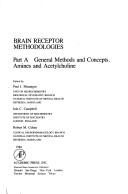
ISBN: 0124703526 Year: 1984
Abstract | Keywords | Export | Availability | Bookmark
 Loading...
Loading...Choose an application
- Reference Manager
- EndNote
- RefWorks (Direct export to RefWorks)
Brain chemistry --- Neural receptors --- Neurotransmitter receptors
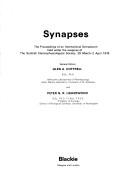
ISBN: 0216903262 Year: 1977 Publisher: Glasgow Blackie
Abstract | Keywords | Export | Availability | Bookmark
 Loading...
Loading...Choose an application
- Reference Manager
- EndNote
- RefWorks (Direct export to RefWorks)
Synapses --- Neurotransmitters --- Neural receptors --- Congresses --- Synapses. --- Synapse --- Synaptic Transmission
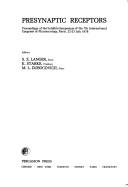
ISBN: 008023190X Year: 1979 Volume: v. 18 Publisher: Oxford,New York : Pergamon Press,
Abstract | Keywords | Export | Availability | Bookmark
 Loading...
Loading...Choose an application
- Reference Manager
- EndNote
- RefWorks (Direct export to RefWorks)
Synapses --- Neural receptors --- Adrenergic mechanisms --- Neurotransmitters --- Congresses --- Congresses --- Congresses --- Congresses
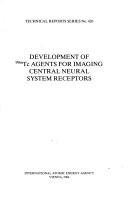
ISBN: 9201153031 Year: 2004 Publisher: Wien International Atomic Energy Agency
Abstract | Keywords | Export | Availability | Bookmark
 Loading...
Loading...Choose an application
- Reference Manager
- EndNote
- RefWorks (Direct export to RefWorks)
Neural receptors --- Diagnostic imaging --- Imaging systems in medicine
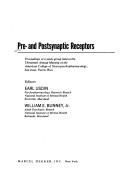
ISBN: 0824763122 9780824763121 Year: 1975 Volume: 3 Publisher: New York Dekker
Abstract | Keywords | Export | Availability | Bookmark
 Loading...
Loading...Choose an application
- Reference Manager
- EndNote
- RefWorks (Direct export to RefWorks)
Neural receptors --- Neurochemistry --- Receptors, Drug --- Sensory Receptor Cell --- Congresses --- drug effects --- Neural receptors - Congresses --- Neurochemistry - Congresses --- Receptors, Drug - congresses --- Neurochemistry - congresses --- Sensory Receptor Cell - drug effects - congresses
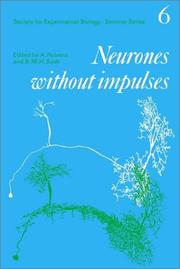
ISBN: 052123364X 0521299357 Year: 1981 Publisher: New York
Abstract | Keywords | Export | Availability | Bookmark
 Loading...
Loading...Choose an application
- Reference Manager
- EndNote
- RefWorks (Direct export to RefWorks)
Animal psychology and neurophysiology --- Physiology of nerves and sense organs --- Neural receptors --- Neural transmission --- Neurons --- Congresses.
Book
Year: 2014 Publisher: Frontiers Media SA
Abstract | Keywords | Export | Availability | Bookmark
 Loading...
Loading...Choose an application
- Reference Manager
- EndNote
- RefWorks (Direct export to RefWorks)
The most biologically-inspired artificial neurons are those of the third generation, and are termed spiking neurons, as individual pulses or spikes are the means by which stimuli are communicated. In essence, a spike is a short-term change in electrical potential and is the basis of communication between biological neurons. Unlike previous generations of artificial neurons, spiking neurons operate in the temporal domain, and exploit time as a resource in their computation. In 1952, Alan Lloyd Hodgkin and Andrew Huxley produced the first model of a spiking neuron; their model describes the complex electro-chemical process that enables spikes to propagate through, and hence be communicated by, spiking neurons. Since this time, improvements in experimental procedures in neurobiology, particularly with in vivo experiments, have provided an increasingly more complex understanding of biological neurons. For example, it is now well understood that the propagation of spikes between neurons requires neurotransmitter, which is typically of limited supply. When the supply is exhausted neurons become unresponsive. The morphology of neurons, number of receptor sites, amongst many other factors, means that neurons consume the supply of neurotransmitter at different rates. This in turn produces variations over time in the responsiveness of neurons, yielding various computational capabilities. Such improvements in the understanding of the biological neuron have culminated in a wide range of different neuron models, ranging from the computationally efficient to the biologically realistic. These models enable the modelling of neural circuits found in the brain. In recent years, much of the focus in neuron modelling has moved to the study of the connectivity of spiking neural networks. Spiking neural networks provide a vehicle to understand from a computational perspective, aspects of the brain's neural circuitry. This understanding can then be used to tackle some of the historically intractable issues with artificial neurons, such as scalability and lack of variable binding. Current knowledge of feed-forward, lateral, and recurrent connectivity of spiking neurons, and the interplay between excitatory and inhibitory neurons is beginning to shed light on these issues, by improved understanding of the temporal processing capabilities and synchronous behaviour of biological neurons. This research topic aims to amalgamate current research aimed at tackling these phenomena.
Neurons. --- Neural receptors. --- Learning --- cell assembly --- sensory processing --- spike timing --- connectivity --- biological neurons --- Spiking Neural network
| Listing 1 - 10 of 53 | << page >> |
Sort by
|

 Search
Search Feedback
Feedback About UniCat
About UniCat  Help
Help News
News